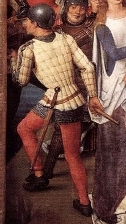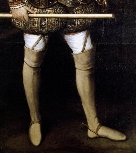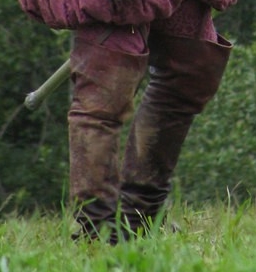16th C. Jack, Suit, and Boots
March 5, 2006 - As you may have noticed, I tend to do quite a bit of Medieval and Renaissance activities - one of them happens to be armored combat. As you probably saw from the photo, the weapons are not
live steel, but are padded and constructed in a way to simulate the weight of real weapons. This project was to put together a 16th C. armor kit that would be both functional and attractive. Note that there is a difference
between a "Jack Coat" or "Jack of Plates" which often had metal plates sewn into the body, and a "Padded Jack," which was made entirely of fabric and possibly some leather.
One side note - although the suit itself was styled after the 1550s-60s, the majority of documentation for the Padded Jack is from the end of the 15th to the early 16th C.
Let us start with the armor. The burgeonet is typical of the 16th C, along with the gorget. The gauntlets are typical clamshell gauntlets, none of which is the focus of this article (I also did not make any of them =). The Padded Jack, however, is one of the foci, and we should take some time to discuss that in more detail.
|
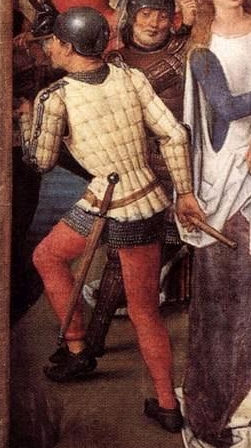 | |
To understand more about the padded jack itself, we refer to the ordinances of Louis XI of France (translation from the Dragon issue mentioned above):
|
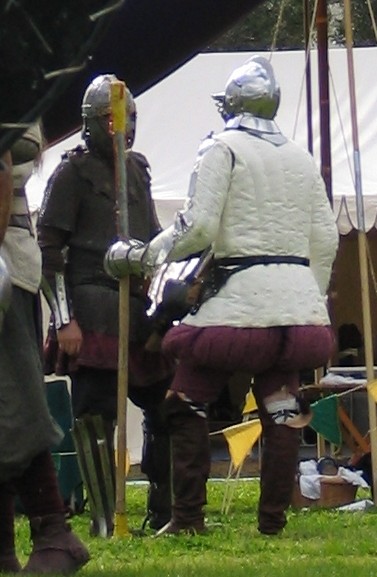 (c) Katherine Goodpasture
(c) Katherine Goodpasture | |
In my reproduction, instead of a full 30 layers of linen, I only used 16, and 8 for the arms. These were padded out with additional
batting to make it seem like there were more layers than there actually were. The jack chains were cut in a manner similar to the example
in the Memling painting, and dished by yours truly. Leather thongs close the jack and point the chains to it. You will note that the jack chains
are a lightweight, yet effective armor when paired with the jack - as many blows are slashes to the side, the chains will take the brunt of the
trauma, effectively providing a rigid surface to strike against. |
 (c) Katherine Goodpasture
(c) Katherine Goodpasture | |
Moving onto the boots, we have a couple of excellent sources - one is a portrait of Philip II in armor by Anthonis mor van Dashorst, 1557 (top). The other is
a painting of the Duke of Lerma, by Juan Pantoja de la Cruz, c. 1600 (bottom). The two portraits share a number of similarities, which I will point out here.
|
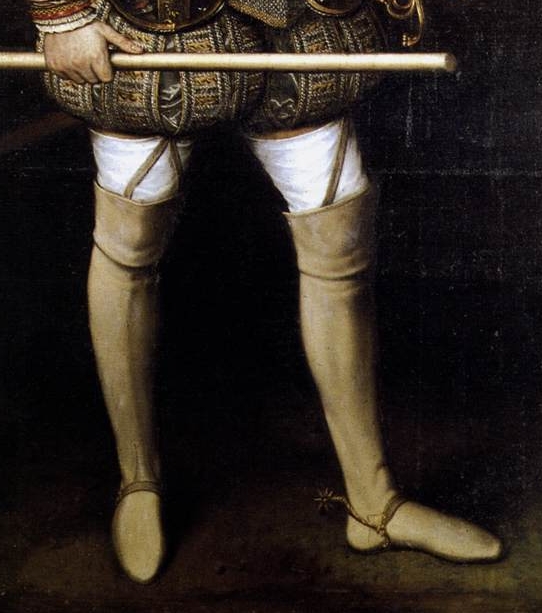 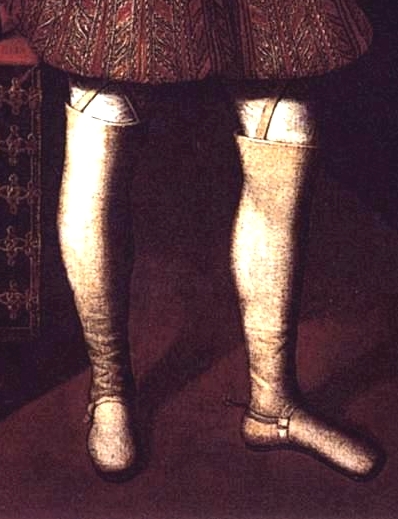 | |
The reproduction boots were patterned after Philip's boots above, with the upper/vamp seam towards the back of the quarters. Goubitz was also references, as there are some boots similar
to this style in his Stepping Through Time. What one can notice now is the way that the vamp seems to follow the front of the foot all the way to the top of the shin
like many modern cowboy boots - this is not observed in all boots of the time period, though there are several extant pieces which have this type of construction. Forgive the picture -
the boot has been through several wars and tournaments, and I have to give it a good polish and cleaning =)
|
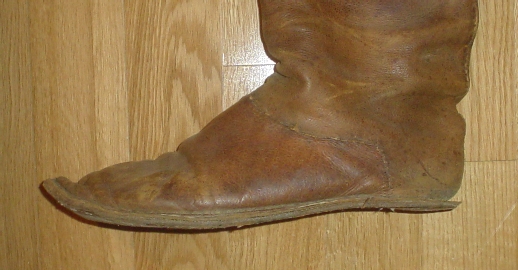 | |
The leather used was a lightweight cow belly which was very flexible when first purchased, but became much stiffer once the boots had been dyed. However, there is no seam or buckle in the boots,
to follow the examples above.
|
 (c) Pete Good
(c) Pete Good | |
